Last Updated on May 28, 2024
Heard about Microsoft Places?
In this guide, let me introduce you to the new Microsoft Places designed to “transform spaces into engaging places” with AI.
Let’s get started.
Table of Contents:
What is Microsoft Places?
Imagine walking into a meeting room that’s always ready, or an office environment that adapts to your needs.
That’s where Microsoft Places comes in — think of it as a smart assistant for your office.
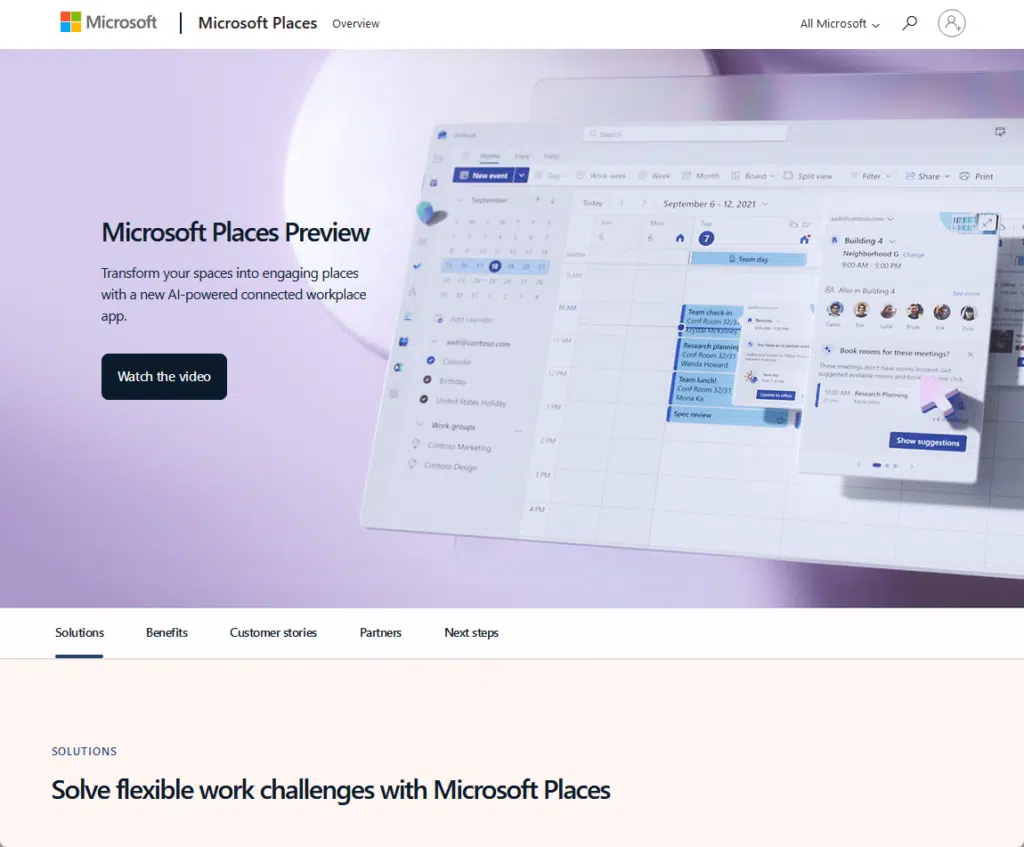
It’s making everything from scheduling meetings to finding the perfect workspace easier and more efficient.
In short, it’s an innovative solution from Microsoft designed to turn traditional office spaces into smart, flexible environments.
⚠️ Note: As Microsoft Places is still in preview, most of the images you will see here came from its Microsoft home page and announcement.
Sign up for exclusive updates, tips, and strategies
Key Features of Microsoft Places
Let’s check out what makes Microsoft Places truly stand out.
Here are some of its key features:
1. Smart Scheduling
One of the most impressive features of Microsoft Places is smart scheduling.
If you’ve ever struggled to find an available meeting room or dealt with double bookings, this tool is a game-changer.
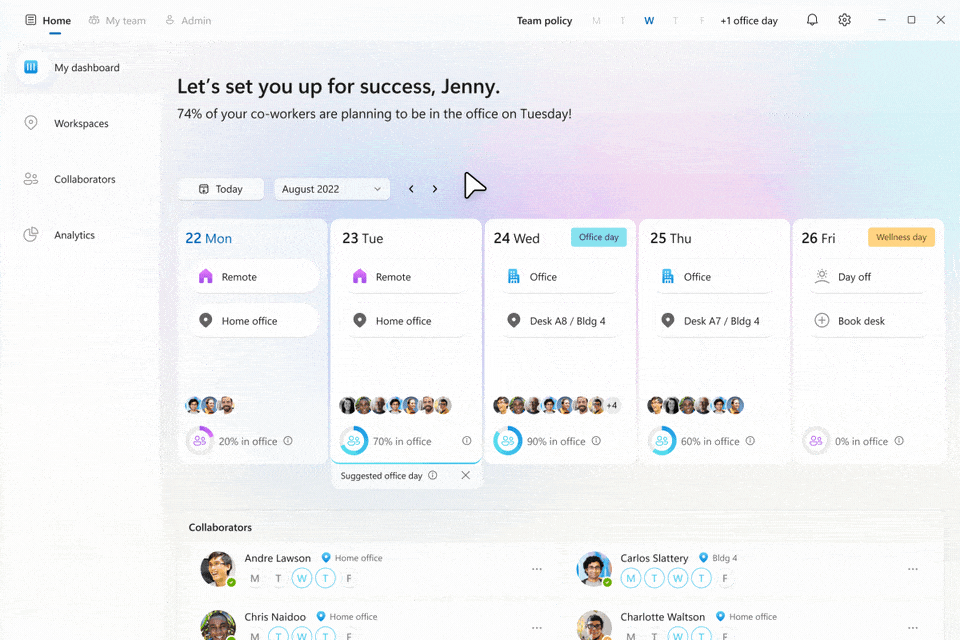
Smart scheduling automatically finds the best times and spaces, so you always have a room ready when you need it.
It saves you time and hassle, letting you focus on what really matters.
2. Seamless Integration
Another major advantage of Microsoft Places is its seamless integration with existing Microsoft 365 apps.
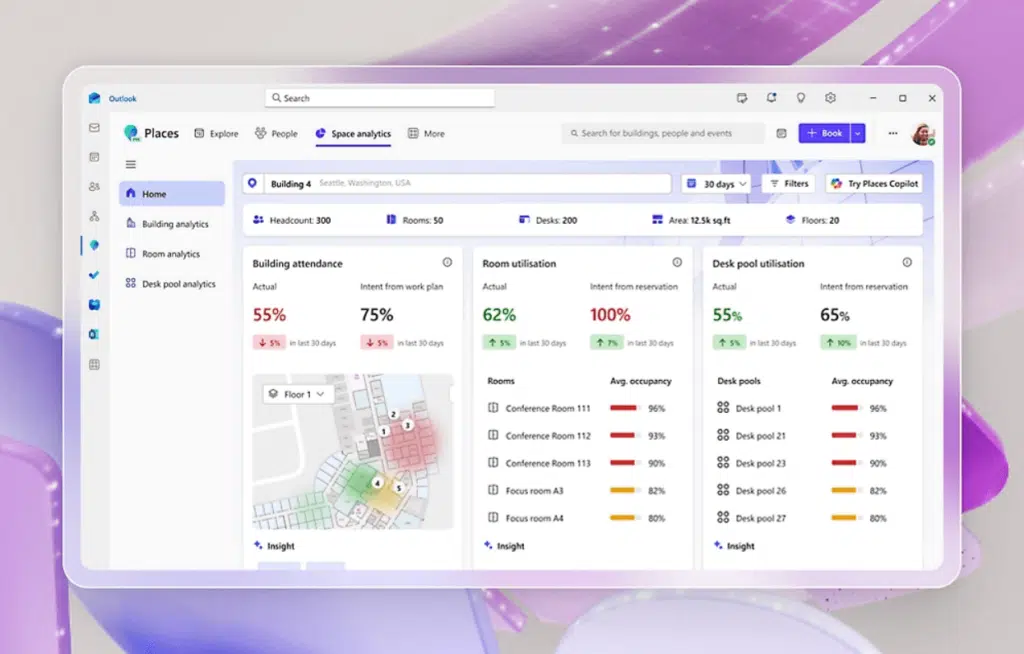
Microsoft Places fits right in when you’re using tools such as:
- Outlook to manage your calendar
- Microsoft Teams to collaborate with your colleagues
You don’t have to learn new systems or switch between different platforms — everything works together smoothly.
It also makes use of Microsoft Copilot, like getting recommendations based on your meetings.
👉 Related: Microsoft 365 Tools Overview: The Ultimate Guide
3. Space Insights
Imagine having detailed insights into how your office space is being used.
Space Insights provides data-driven analytics, helping you understand which areas are frequently used and which are not.

This information can be invaluable when making decisions about space allocation, redesign, or even downsizing.
By knowing exactly how your spaces are used, you can make informed choices that enhance efficiency and productivity.
4. Personalized Experience
Microsoft Places also focuses on creating a personalized experience for every employee.
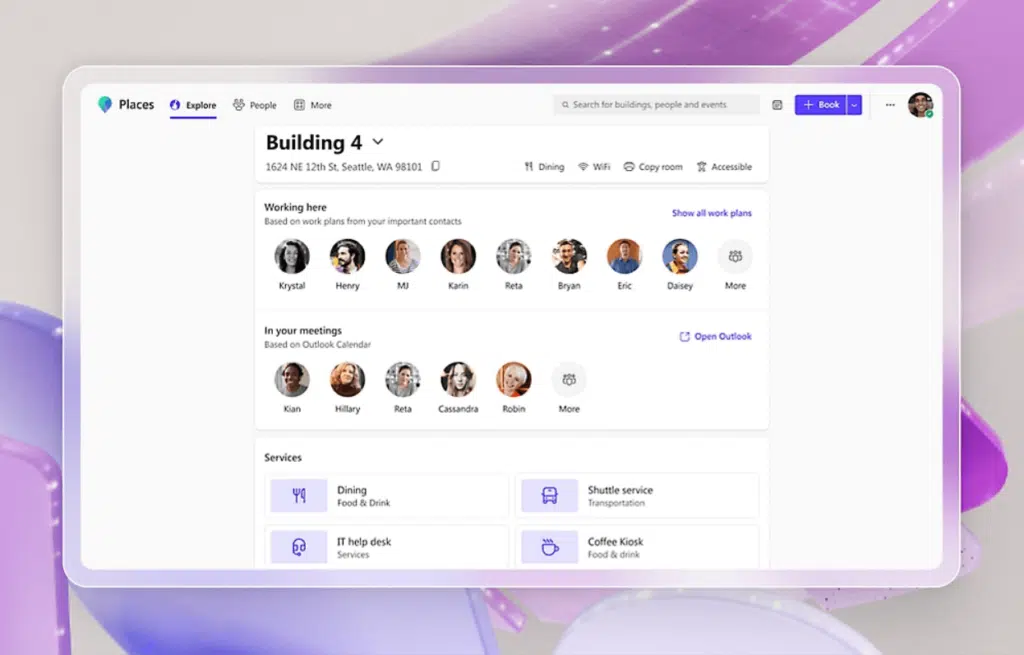
The platform adapts to individual preferences and needs — each person can find the best workspace for their tasks.
For example:
- Someone needs a quiet room for concentration
- You want a collaborative area for team projects
This personalization leads to a more comfortable and productive work environment.
5. Improved Collaboration
Finally, Microsoft Places boosts collaboration within your team.
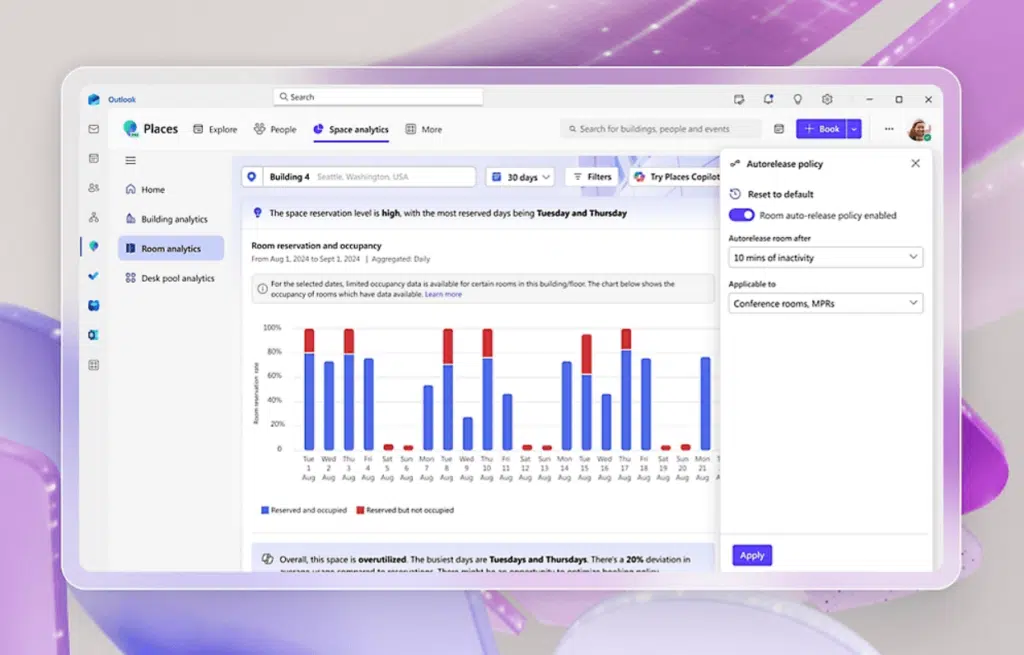
It encourages teamwork and interaction by:
- Optimizing space usage
- Making it easier to book meeting rooms and collaborative spaces
When you have the right environment for collaboration…
Great ideas can flow more freely, leading to better outcomes for your projects and your organization.
Use Cases and Applications
Microsoft Places isn’t just a one-size-fits-all solution.
It’s designed to be adaptable across various industries and workplace scenarios.
Here are some practical use cases and applications that highlight how different organizations can benefit from it:
1. Corporate Offices
In corporate settings, efficient use of office space and resources is important.
It can streamline the booking of meeting rooms to reduce conflicts and ensure every space is used effectively.
Here’s how Microsoft Places can actually help here:
- Quickly find and book available rooms, eliminating double bookings.
- Smart Scheduling ensures everyone’s calendar syncs, making meeting coordination easier.
- Less time spent on logistics, and more on actual work.
2. Educational Institutions
Schools, colleges, and universities often face challenges in managing classroom and facility bookings.
Microsoft Places can help educational institutions ensure that classrooms and labs are utilized to their full potential.
Like these:
- Use location insights to see which rooms are underutilized and reallocate them.
- Reallocate spaces for study areas or additional labs based on actual needs.
- Ensure students have access to necessary resources when they need them.
3. Healthcare Facilities
Healthcare facilities, such as hospitals and clinics, can benefit greatly from scheduling and space optimization.
Managing patient appointments, doctor schedules, and treatment rooms can be complex and time-consuming.
Here’s how Microsoft Places can help:
- Smart scheduling streamlines patient appointments, reducing wait times.
- Ensure treatment rooms and resources are efficiently allocated.
- Better management of schedules and spaces enhances overall patient care.
4. Remote and Hybrid Work Models
With the rise of remote and hybrid work models, managing office space has become more challenging.
It can help organizations adapt to these new working methods by providing flexible space management solutions.
Some examples:
- Ensure remote and hybrid employees have access to necessary spaces.
- Efficiently manage hot desking, making desks available as needed.
- Adapt office space to meet the evolving needs of remote and hybrid teams.
5. Event Management
Organizations that frequently host events can use Microsoft Places to manage these activities more effectively.
For example, those who hold conferences, workshops, or training sessions can enjoy the following benefits:
- Handle the scheduling of event spaces to avoid conflicts.
- Ensure all necessary resources are available for events.
- Coordinate multiple events across different rooms smoothly.
6. Government and Public Services
Government offices and public service providers can also benefit from the efficient space management and scheduling features.
These organizations often deal with high volumes of appointments and need to ensure that resources are used efficiently.
Examples:
- Use Smart Scheduling to manage citizen appointments, reducing wait times.
- Ensure resources are used efficiently across different departments.
- Enhance the delivery of public services through better space and schedule management.
This new platform can create a more efficient, adaptable, and user-friendly environment tailored to your specific needs.
Getting Started with Microsoft Places
Microsoft Places is still in preview so they’re rolling it out as they expand capacity.
Before you start up with it, make sure to take some time to assess your organization’s specific needs.
When you’re ready to start, you can check this Microsoft page to see how to opt into the public preview. 🙂
Anyway, got any questions about Microsoft Places? I’ll try my best to answer them with what I know now.
For any business-related queries or concerns, contact me through the contact form. I always reply. 🙂

